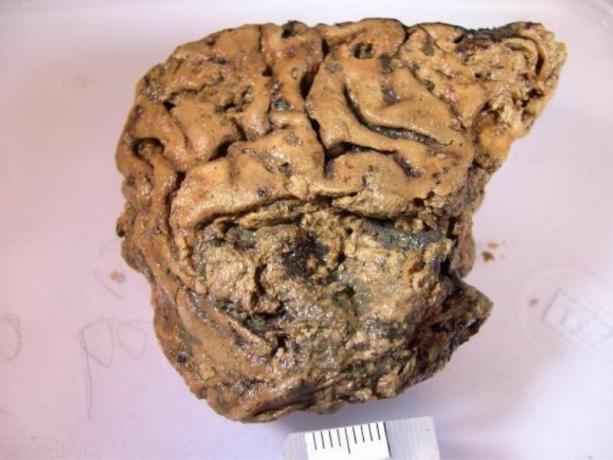Archeology is a fascinating field that offers a connection between the past and the present. Through its discoveries and research, it is possible to learn about ancient civilizations and great historical personalities. However, this science also finds many very strange artifacts and remains that can surprise.
Blood of the King of France, remains from 5,000 years ago and a cemetery of headless Vikings. The list of strange items only grows with each new discovery by archaeologists.
see more
6 signs that ONLY immature people give; learn to identify to…
Artist recreates famous paintings and drawings with AI and results are...
Thus, each excavation can reveal a new ancient and strange story that will be told to humanity. Below, you can see the greatest oddities of archaeological practice that will certainly impress you!
10 weirdest archaeological discoveries
1,800-year-old modified skulls
Modified skulls were found in Japan. Analysis indicates that they were from an indigenous population that lived in the Asian country 400 years ago.
These people were known as Hirota and carried out the deformation procedure when the inhabitants were still children.
2. Skeleton tied in a strange way
The skeleton of a young medieval woman was found face down with her ankles tied.
The case took place in England and archaeologists believe that the burial was carried out in this way so that she would not return from the grave.
The remains also indicate that the young woman was fifteen years old and appeared to have suffered from childhood malnutrition.

(Image: Museum of London Archeology/Reproduction)
3. Egyptian Book of the Dead
Filled with spells and texts from Ancient Egypt, the book of the dead was found in the basement of a museum. Apparently, the historical material has around 100 fragments that keep the past and beliefs about the life and death of the Egyptian civilization.
Brain and skin remains from 3,700 years ago
In Türkiye, researchers found 3,700 year old remains with parts of the brain and skin still preserved.
It is believed that the two individuals found belong to the Bronze Age, and the materials showed signs of charred skin, which may be related to an important historical moment at the Tavsanli archaeological site Hoyuk.
5. “Alien” skulls
Five skulls generated great curiosity when they were found in Mexico. The remains had a peculiar, elongated shape, very similar to the representation of aliens in cinema.
However, analysis of the material indicated that the skulls are human and were modified naturally, due to cultural practices of ancient people.

(Image: ListVerse/Reproduction)
6. Blood of the King of France
A bloodstained handkerchief has reignited research in France as it was linked to the execution of King Louis XVI. A legend reports that some people possessed historical items from the day of the execution in 1792.
Thus, the material underwent DNA analysis carried out with the mummified head of an ancestor, which led to confirmation of the artifact.
7. Vampires with a stake in the heart
100 graves were found in Bulgaria, all with a stake in the chest. In the 14th century, this type of burial was very common for individuals considered vampires. Several studies indicate that the site still contains many tombs with these characteristics.
8. Iceman's corpse
In Austria, a well-preserved 5,300-year-old corpse was named “Ötzi, the Iceman.” The strangest fact about this discovery is that the mummy was in perfect condition and the researchers were even able to analyze the blood found on Ötzi's corpse.

(Image: Robert Clark/Nat Geo Image Collection/Reproduction)
9. Ditch of headless Vikings
51 bodies were found in a mass grave in the UK, in Dorset. The way they were buried surprised scholars, as the heads were severed and piled up. Apparently, the brutal attack was carried out by a group of mercenaries called the Jomsvikings.
10. 2,600-year-old intact brain
A 2,600-year-old brain with soft tissue still in it has been found in an Iron Age fossil. From 2008 to 2020, researchers sought answers to the event.
The main theories are that an acidic fluid performed the embalming or the cold soil was responsible for the natural preservation.

(Image: Axel Petzold/University College London/Reproduction)
These archaeological enigmas remind us that human history is rich in surprises and that there is always more to learn and discover about our past.



